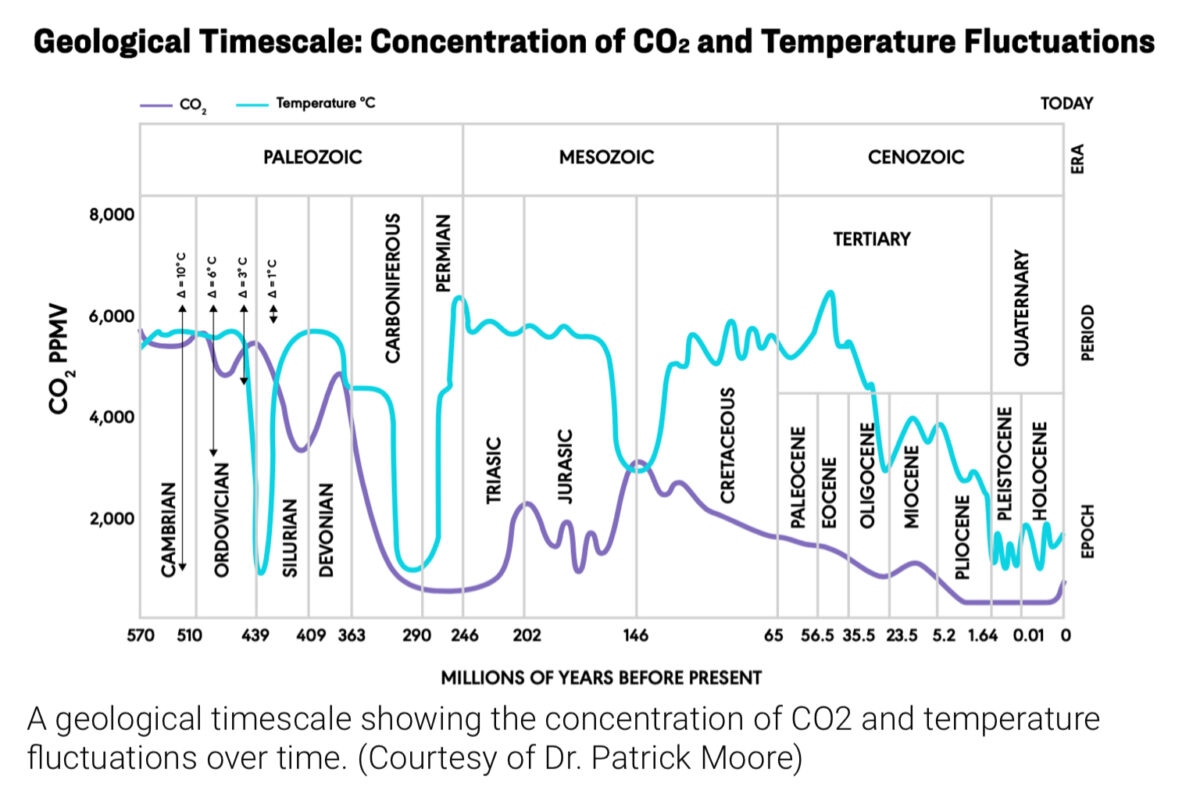Every now and then Paul Jacob covers “the climate.” This would fall outside of the scope of his commentary if politicians and activists would not step outside the scope of their expertise. In the real world, alas, “climate change” and “anthropogenic global warming” are huge political issues, driving trillions of dollars in “research” and, increasingly, in mitigation policies. Costly, sometimes horrendously destructive and dangerous policies.
So “Fixation on CO2 Ignores Real Driver of Temperature, Experts Say,” a recent article by Katie Spence in The Epoch Times is worth consulting for a contrarian take.
The current pseudo-consensus driven by massive coordinated propaganda holds that increases in atmospheric carbon is the main destabilizer to past low temperatures, which are almost unaccountably regarded as ideal. Ms. Spence notes that the cold temperatures of pre-industrial Europe were not pleasant. But then gets to a major point:
“If emissions of CO2 stopped altogether, it would take many thousands of years for atmospheric CO2 to return to ‘pre-industrial’ levels,” the Royal Society states in a report on its website. The organization describes itself as a “fellowship of many of the world’s most eminent scientists.”
“Surface temperatures would stay elevated for at least a thousand years, implying a long-term commitment to a warmer planet due to past and current emissions,” the report states. “The current CO2-induced warming of Earth is therefore essentially irreversible on human timescales.”
If this be true, then a lot follows. But would politics actually follow the consequences of this and other arguments? There is a social addiction, at present, to the AGW claims about CO2.
The article relies heavily on the work of Ian Clark, emeritus professor at the Department of Earth and Environmental Sciences at the University of Ottawa, who argues that CO2’s driving of climate is only apparent; in actuality is follows temperature changes “It lags by about 800 years.”
“If we completely cut out emissions, CO2 would stop rising at its current rate,” Mr. Clark said. “But it would probably continue to rise to a certain point, and then it could come down. But that would be driven by temperature.”
Mr. Clark said that in different parts of the world and at different times of the year, CO2 fluctuates “between 15 and 20 percent,” and that’s driven by the temperature of the seasons.
“If we start having cooler summers and colder winters, those fluctuations would start driving CO2 further down. But overall, climate is going to do whatever the sun dictates,” he said.
